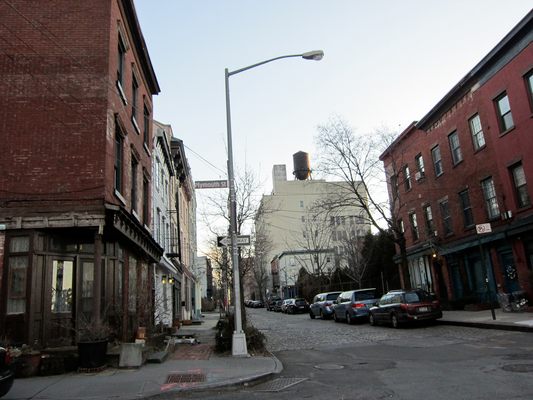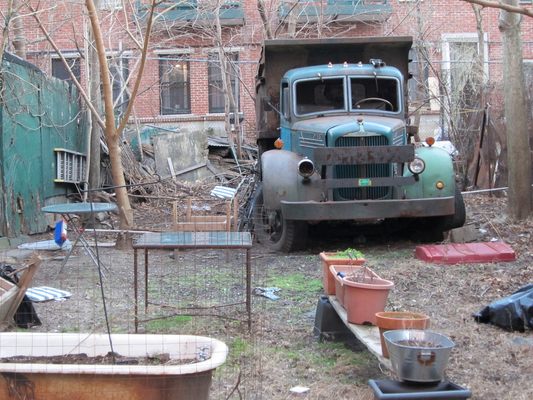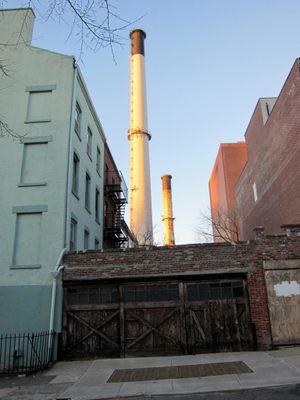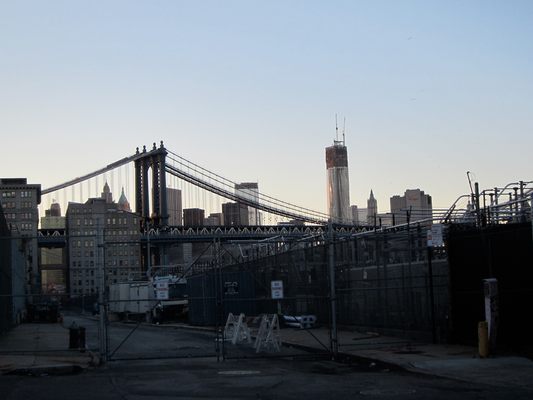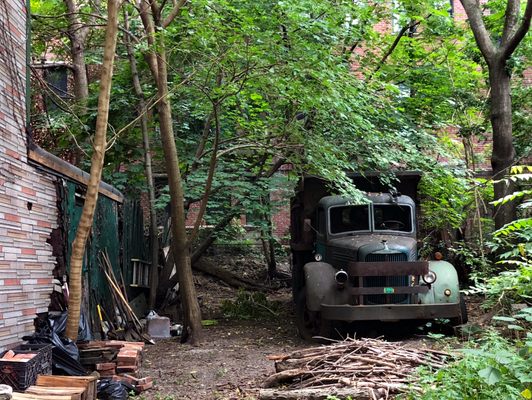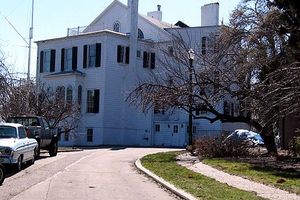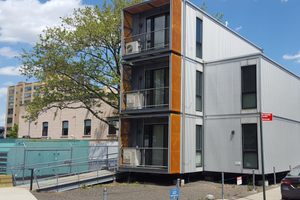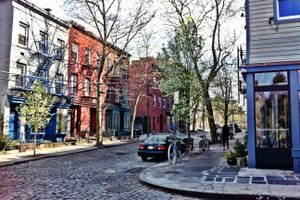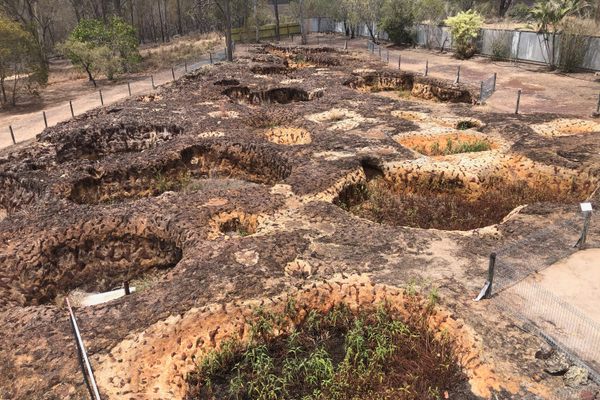About
Located just off the York Street subway stop and just steps from DUMBO, you can visit a slice of 19th century Brooklyn in Vinegar Hill. Its 18th-century developers named it after a battle in the Irish Rebellion, to attract immigrants from that country to the area, who were needed as workers at the nearby Brooklyn Navy Yard.
Long-time residents of the neighborhood fought for and won Historic District status after St. Ann's, the neighborhood's beautiful historic church, was demolished by a real estate developer in the 1990s. The land where the church, built in 1860, stood, remains a vacant lot at the corner of Gold Street and Front Street. Consolidated Edison, Inc., the citywide power company, also demolished many houses in the neighborhood in order to facilitate laying underground power lines, and today reserves exclusive use of the waterfront in this neighborhood for its main Brooklyn power substation.
The neighborhood has seen waves of change as families arrived from Eastern Europe and the South in search of a better life, and today the neighborhood is a quiet, diverse alcove of artists and professionals nestled between the Navy Yard, the Con-Ed substation, and noisier, busier DUMBO.
Although the neighborhood has seen significant erosion of its historical area, the Belgian block cobblestone streets and Greek Revival row houses are distinct reminders of the past. Hudson Avenue, the shady, tree-lined cobblestone street now contains the longest contiguous stretch of the Vinegar Hill historic district, and probably gives the best impression of what the neighborhood must have been like nearly two hundred years ago. On quiet evenings in Vinegar Hill, the memory of those first Irish residents surely still echoes in the stones and wooden-walled houses still sloping down toward the waterfront today.
Related Tags
Know Before You Go
There are three distinct fragments of Vinegar Hill designated by the Landmarks Preservation Committee: Front Street, between Bridge Street and Gold Street; the lower part of Gold Street at Water Street, and Hudson Avenue between Front Street and Plymouth Street.
A good circuit that visits the whole of the historic district starts at Front Street and Hudson Avenue. This is the most intact section of the neighborhood, and the only part with original homes on both sides of the street. From there, walk downhill to Plymouth Street, turn right and walk around the loop formed by Little Street and Evans Street. Along the way, you'll notice a 1930s half-ton truck mysteriously parked in a vacant lot, as well as Quarters A, the former home of the Commandant of the Navy Yard (see separate entry), which can be seen through its huge iron gates. Continue around the loop following Evans Street back to Hudson Avenue, and retrace your steps slightly to Water Street, where you'll head south to Gold Street. Take a deep breath, inhaling the delightful scent of bread baking at the Damascus pita bakery, then turn left and walk uphill past the second stretch of historic homes to Front Street. Turning right onto Front Street, past the vacant lot where St. Ann's stood, you'll encounter the third segment of the district, consisting of brownstones in a Greek Revival style.
By subway, take the F Train to York Street Station, walk downhill to Water Street, then turn right.
By bicycle from the Manhattan Bridge, cross to the Sands Street bicycle path, ride to the end, then turn left onto Navy Street and follow the mural representing the history of the Navy Yard up to the corner, where you'll turn right before the school to enter Hudson Avenue.
From Brooklyn Bridge park, walk to the northernmost tip of the park, exiting at Jay Street, then walk uphill on Jay Street to Water Street and turn left.
Vinegar Hill is generally considered to be distinct from DUMBO starting at Bridge Street; Hudson Avenue is at the end of Water Street.
Hudson Avenue, where both Water Street and Front Street terminate, also houses the popular Vinegar Hill House restaurant -- while this is the only fine dining establishment in the neighborhood, V.H.H., as it's known to locals, draws diners from across the city and beyond with its farm-to-table New American cuisine. Make sure to make a reservation at their web site before visiting if you wish to eat here on a summer weekend. If the weather is good, ask to be seated in its charming rear courtyard.
Published
February 21, 2012
Sources
- http://www.nyc.gov/html/lpc/downloads/pdf/maps/vinegar_hill.pdf
- http://www.brooklyneagle.com/articles/2014/12/10/commandants-house-sweetest-landmark-vinegar-hill
- http://www.brooklyneagle.com/articles/2017/1/25/lament-st-anns-long-lost-vinegar-hill-church
- http://www.nytimes.com/2003/08/31/realestate/if-you-re-thinking-living-vinegar-hill-brooklyn-cobblestone-streets-history.html
